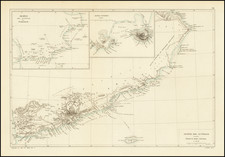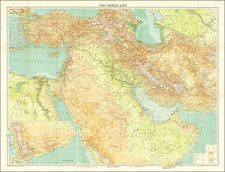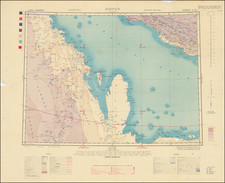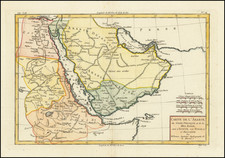Archaeological Sites Near Jubail Industrial City
Rare locally published map of the Archaeological sites in the area around the Jubail Industrial City, Saudi Arabia, published by the Royal Commission for Jubail and Yanbu and Saudi Arabian Bechtel.
The map shows the area to the west of Jubail townsite and the planned area planned for development of petrochemical, steel and fertilizer production facilities.
Beyond the footprint of the industrial complex, about a dozen sites are marked with about a dozen numbers ranging from 163/208 to 179/208. These numbers would seem to correspond with archeological sites identified by the Saudi Arabia Royal Commission.
Jubail, Saudi Arabia
Jubail is a city in the Eastern province of Saudi Arabia. It is home to the largest industrial city in the world. Jubail comprises the Old Town of Al Jubail (Jubail Balad), which was a small fishing village until 1975, and the Industrial Area. Jubail Industrial City is the largest civil engineering project in the world today.
In 1975, the Saudi government designated Jubail as the site for a new industrial city, with rapid expansion and industrialization arising. The new industrial and residential areas were named Madīnat al Jubayl aṣ Ṣinā`īyah (Jubail Industrial City).
In the mid-1970s the Bechtel Company of San Francisco was commissioned to engineer the construction of a new port, one of the largest civil engineering projects in the world. The core of the new city, developed under the direction of two Saudi government agencies, the General Petroleum and Mineral Organization (PETROMIN) and the Saudi Basic Industries Corporation (SABIC), is composed of some 16 primary industries. These industries include factories producing steel, gasoline, diesel fuel, petrochemicals, lubricating oil, and chemical fertilizers. In addition to these plants, secondary and support industries were provided for. The entire industrial zone covers about 51 square miles. Housing for workers was separated from the industrial area by greenbelts irrigated with desalinated gulf water. Miles of module paths and cooling-water canals were built throughout the city. Altogether, the sectors of the city covered nearly 365 square miles. Major roads connect Jubail with Dhahran and Dammam.
Bechtel began work on the Jubail Industrial City project more than 40 years ago and is still working in Jubail now.












![[ Arabian Peninsula ] Sexta Asie Tabula](https://storage.googleapis.com/raremaps/img/small/80372.jpg)



